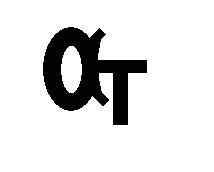
“We have more than 40 installations of bio 3D printers in India, mostly at reputed institutions like IITs, IISc, AIIMS, and other central Govt R&D institutions all over India. We also have a very active R&D and collaboration program with institutions,” Alfatek’s CEO and Founder Sumant Bhutoria told 3DPrint.com.
“The Alfarod Bio 3D printer has been installed at SCTIMST, Trivandrum, AIIMS, New Delhi, IIT Delhi, IIT Hyderabad, IIEST, etc for the last 3 years…This machine was used for work that has been featured at various international conferences and journal publications like JMR,Cambridge, UK and JPMPB, Philadelphia, USA. I have also been involved in R&D with some of the institutions and am a co-author in various publications.”
Each Alfarod Bio 3D printer is a single extruder syringe pump system that’s compatible with standard 5 ml and 10 ml syringes. Each one is customized per the customer’s R&D needs and other requirements, and is able to print structures on glass slides, Petri dishes, placebo films, and well-plates.
“It can be used to print living cells mixed in various bio-ink formulations of alginate, pluronic, PCL or other gels, and pastes,” Bhutoria told us.
The AlfaRod AR1 bioprinter has a build volume of 200 x 180 x 120 mm, with a 100 micron accuracy and 12.5 micron resolution. Reaching maximum speeds of up to 12,000 mm a minute, it has an extrusion force of 100 N and a uniformly heated bed, thanks to PCB sterilized glass; this stops prints from warping. The bioprinter’s X-Carriage has a single deposition extruder and a plunger driven by stepper motor, and the system also offers UV curing.
The system, based on open source GPL, has a USB interface, is compatible with Windows, Mac, and Linux software, and can use both 0.3 mm and 0.5 mm nozzle sizes.
“The AlfaRod AR1 is based on open source design that adds ethernet, infra-red sensors and an advanced micro-controller to the 3D printer,” the website states. “This enables additional features such as auto-bed leveling, planarity compensation, orthogonal compensation and web-control.”
Alfatek itself is an IIT-IIM venture in rapid prototyping technologies and solutions, and according to the website, was the first Indian 3D printer manufacturer to be rated in the “High Resolution” category of FDM-based printers by the 3D Hubs network; the company also enjoys a current 5-star rating for print quality on 3D Hubs. Instead of just manufacturing and selling its 3D bioprinters, the company works with both industrial and professional segments, providing 3D printing solutions all the way from design validation to prototyping, in addition to offering design and consultancy services in rapid electronics prototyping.
The company is also an authorized dealer for the bioprinting companies Cellink and RegenHu in India. In addition to its AlfaRod AR1 3D bioprinter, Alfatek manufactures the multi-color, multi-material AlfaMendel AM2 and the entry level AlfaMendel AM1. The company also offers a few electronics products, such as a Solar Reporter, and several different Arduino products.
Back to its 3D bioprinting work, Bhutoria told us that it had worked on a unique project with partner IIT Delhi – 3D bioprinting on a rotating spindle.
“This is particularly useful when fabricating blood-vessels and cylindrical tissues,” Bhutoria explained. “The value addition from our side was the fact that we can automate the process to write complex gcodes for 3D printing very complex stent patterns.”
You can get a better look at this process in the video below:
Discuss this story and other 3D printing topics at 3DPrintBoard.com or share your thoughts in the Facebook comments below.
[Images: Alfatek]